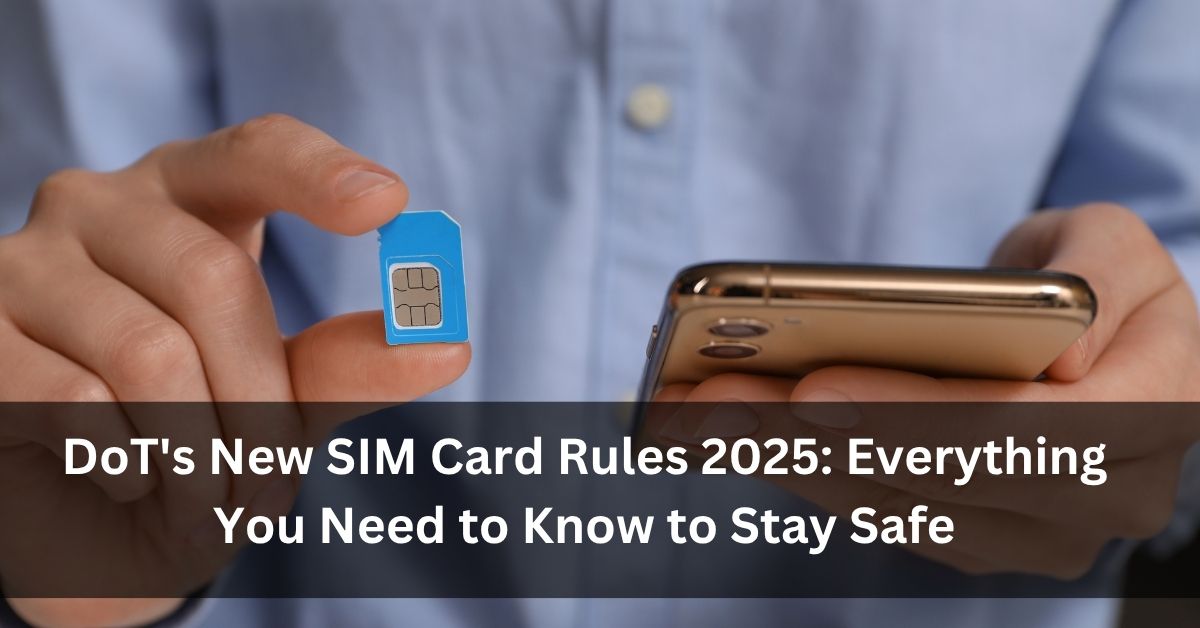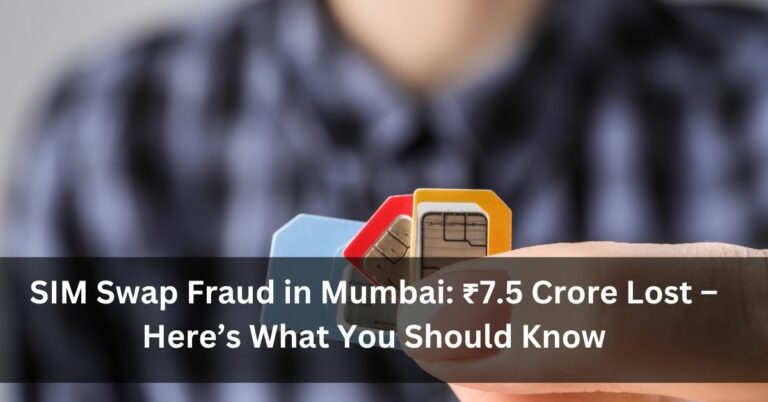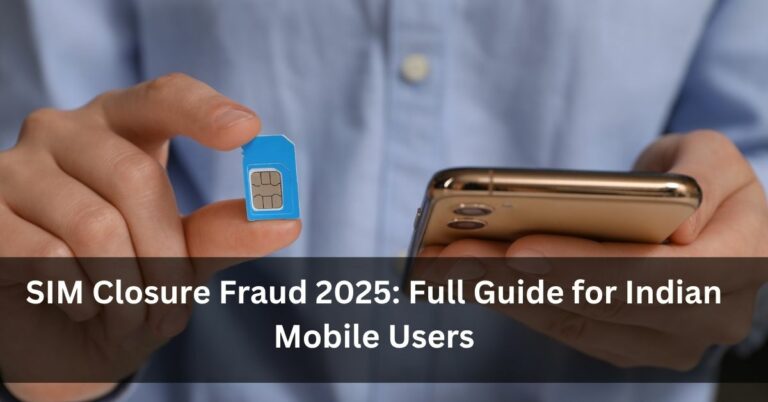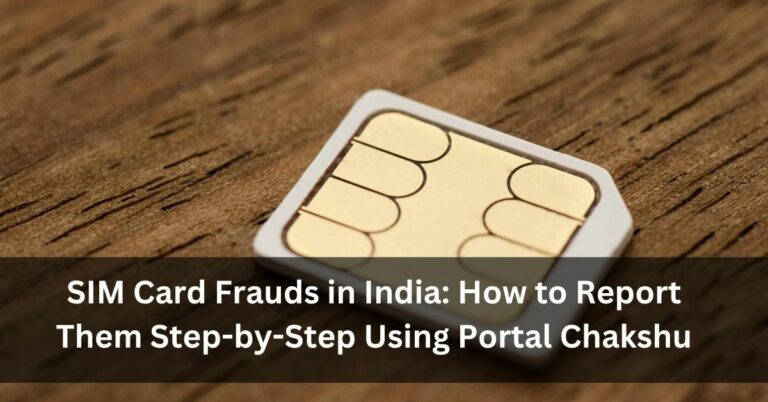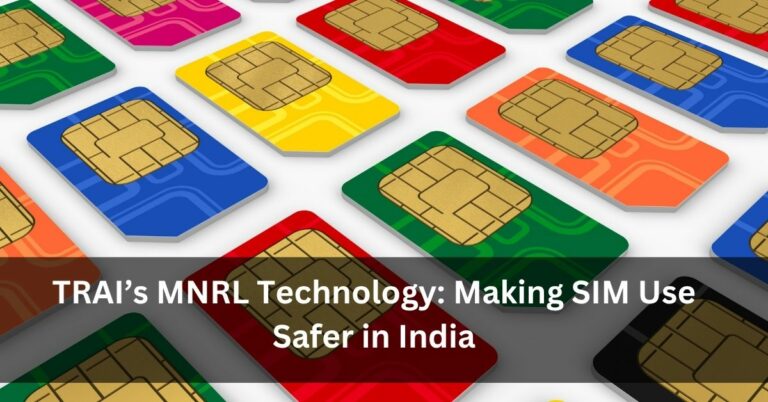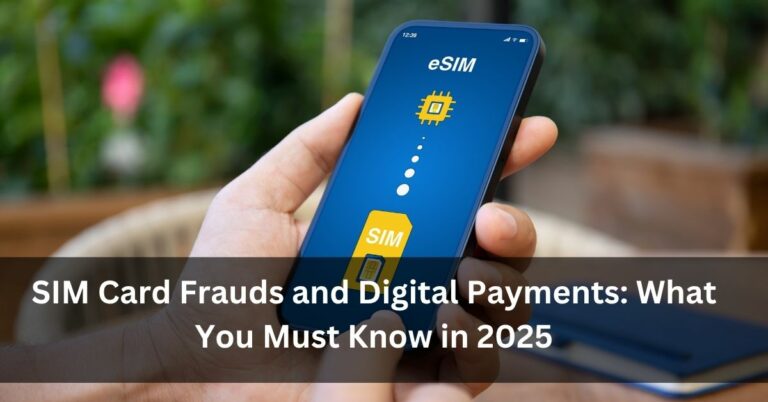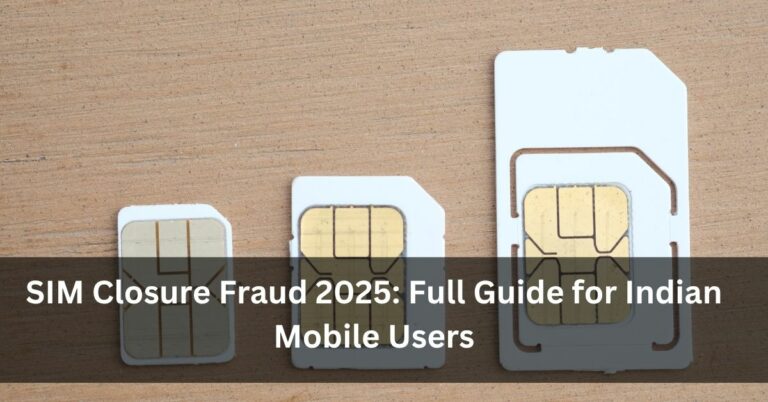DoT’s New SIM Card Rules 2025: Everything You Need to Know to Stay Safe
Mobile phones are used for almost everything today—payments, calls, banking, shopping, and more. Because of this, SIM card fraud has also increased. People are being tricked through fake calls, messages, and misuse of SIM cards issued using false documents.
To stop such frauds, the Department of Telecommunications (DoT) has made new rules for SIM card verification. These rules aim to ensure that every mobile number is issued to the correct person and cannot be misused.
In this blog from Portal Chakshu, we will explain these new rules in simple words. We will also tell you how they help, and what you should do next.
What Is SIM Card Fraud?
SIM card fraud happens when someone gets a mobile number using fake identity details. They use this number to send scam messages, cheat people through fake payment requests, or pretend to be someone else.
Sometimes, fraudsters even get a SIM card using your name and Aadhaar without your knowledge. This can be dangerous and cause financial loss.
That’s why SIM cards need proper verification before being activated. And that’s what the new rules focus on.
What Are the New SIM Rules Announced by DoT?
Let’s look at the main updates one by one:
1. Aadhaar-Based Verification Only
Now, every new SIM card must be activated using Aadhaar-based eKYC. This means your Aadhaar number will be used to confirm your identity. The earlier system of using paper documents is no longer allowed.
This step helps make sure that only the real person gets the SIM card.
2. Limit on Number of SIMs per Person
One person can have up to 9 SIM cards. In some states like Jammu & Kashmir, Assam, and the North East, the limit is 6 SIMs.
If you need more than that, you must explain why and get approval after an extra check.
3. SIM Sellers Must Follow Rules
Shops that sell SIM cards (called Points of Sale or PoS) must now register themselves properly. They must follow the new verification rules strictly. If they break the rules or issue SIMs with fake IDs, they will be blacklisted and cannot sell SIMs anymore.
This will stop fake numbers from being sold easily.
4. Old SIMs Can Be Re-Verified
If the DoT finds that a SIM was activated using false details, they can ask the user to verify again. If the user does not complete the re-verification, the number may be blocked.
This helps clear fake connections from the system.
How Will This Affect You?
For most users, there’s nothing to worry about. If your SIM card was taken with proper documents, it will keep working normally.
When you take a new SIM, the process may take a bit longer, as it will now involve Aadhaar eKYC. But this small step makes your number more secure.
Also, if your telecom company asks you to re-verify your number, make sure to complete it on time.
Why These Rules Were Needed
The number of cases involving SIM card misuse has gone up in the last few years. Fake messages, bank fraud, and scam calls often come from numbers that were bought using fake documents.
With stronger rules and checks, the chances of this happening again will be lower.
These steps are not just for the government or telecom companies. They help you, the common mobile user, stay safe.
Portal Chakshu has shared many updates like this in the past, especially on issues related to digital safety. Following such rules helps build trust in mobile services and keeps you protected.
Tips to Stay Safe as a SIM Card User
Here are some simple habits that can protect you and your mobile number:
- Take SIM cards only from authorised mobile stores.
- Never give your Aadhaar or PAN card to unverified agents.
- Do not share OTPs, PINs, or passwords with anyone.
- If your SIM stops working suddenly, contact customer care immediately.
- If you lose your phone, block your SIM through your service provider.
You can read more such tips on Portal Chakshu, where we share regular updates on mobile and digital safety.
How to Report SIM Fraud Using Chakshu?
The DoT has also launched a reporting system called Chakshu, available through the Sanchar Saathi portal. This lets anyone report scam calls, fake messages, or any misuse of mobile services.
Here is how you can report:
- Visit sancharsaathi.gov.in.
- Select “Chakshu” from the homepage.
- Choose the type of fraud – for example, SIM misuse, fake caller, or scam message.
- Fill in the details and upload screenshots or proof if available.
- Submit the complaint after verifying with OTP.
This complaint will help authorities track fraud numbers and stop them. It also prevents others from getting cheated.
You can also visit Portal Chakshu to find more guides like this, written in easy language for Indian users.
A Quick Summary of the SIM Rules 2025
| Rule | What It Means |
| Aadhaar eKYC | Only Aadhaar-based verification allowed |
| SIM Limit | Max 9 SIMs per person (6 in some states) |
| Seller Rules | SIM sellers must follow strict guidelines |
| Re-verification | Required if fraud is suspected |
| Fraud Reporting | Use Chakshu to report telecom scams |
Final Words
The new SIM card rules by DoT are made to stop fraud and keep mobile users safe. While the process may feel strict, it is a small step to make sure your mobile number is not misused by anyone else.
Always be alert. Know the rules. And take quick action if something seems odd.
For more updates on SIM safety, fraud reports, or telecom alerts, keep checking Portal Chakshu. It’s made to help users like you stay aware and safe in the digital world.

